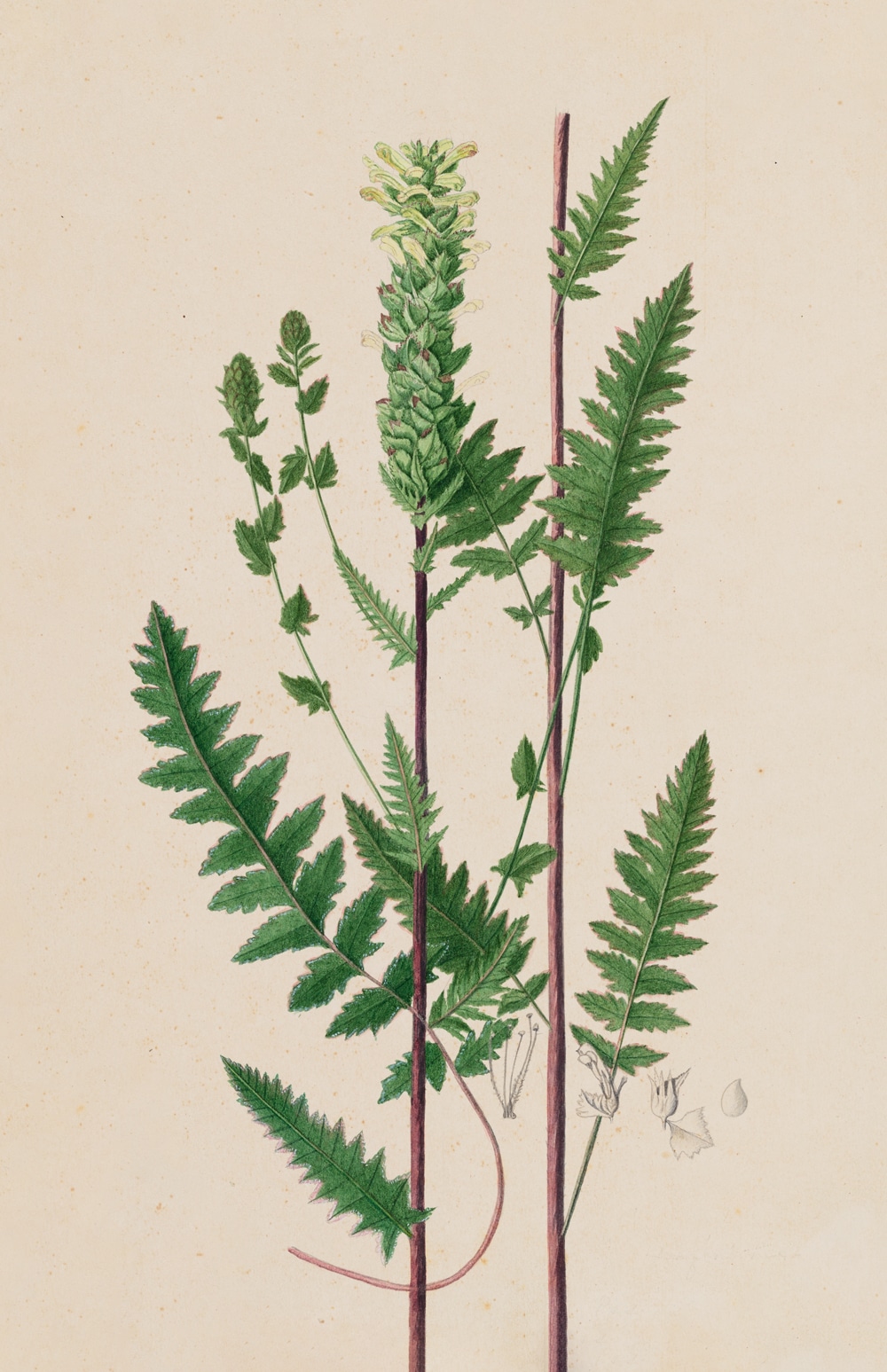Furbish’s Lousewort | Up Close
How Maine’s humble Furbish’s lousewort went from supposed extinction to cause célèbre.

Pedicularis furbishiae (Furbish’s lousewort). Illustration by Kate Furbish; courtesy of the George J. Mitchell Department of Special Collections & Archives, Bowdoin College Library.
One summer day in 1880, an amateur botanist and painter named Kate Furbish was walking along the St. John River in northern Maine when she found a plant she’d never encountered before. The river was known for its rare flowers, but this one, a member of the common lousewort family, had somehow been overlooked by the world of botany. Almost as surprising as its discovery was that it eventually was named Pedicularis furbishiae (Furbish’s lousewort), a remarkable honor for a woman scientist at the time.

Over the course of four decades, Furbish sketched and painted more than 1,300 Maine plant species, and yet her work might be all but forgotten today if it hadn’t been for that little lousewort. In 1965, Congress authorized a massive hydroelectric project that would flood 55 miles of the St. John River in order to send power to Boston and Connecticut. Dubbed the Dickey-Lincoln Dam, it was the largest energy project ever envisioned for New England and was championed by Maine’s leading politicians. And when a global oil crisis hit in the early 1970s, the time to build the dam had seemingly arrived.
In 1976, the Army Corps of Engineers hired botanist Charles Richards to survey the proposed flood region to ensure the dam would not run afoul of the 1973 Endangered Species Act. No one had seen Furbish’s lousewort for decades; it was thought extinct. So when Richards found it growing where the dam would drown it, environmental battle lines were drawn.
“Flower Power Stops Electric Power,” the headlines read. Famed radio broadcaster Paul Harvey began one show by saying, “Can you believe it, folks? In Maine they want to stop a dam to save a flower.” An Indiana congressman fumed, “A thousand years from now we may have a nation of louseworts and nothing else. As far as anyone knows, they’re not good for anything.”
The Furbish’s lousewort issue sparked a demand for writing “common sense” into the Endangered Species Act, and in 1978 Congress amended the law to grant exemptions for projects “in the public interest.” Weighing in on the controversy, a National Fish and Wildlife botanist said ruefully, “For the first time we may consciously render a species extinct because it doesn’t fit our master plan. I wonder where we’ll stop.”
But the furor provided time for Maine to reconsider the costs and benefits of the dam, and by the early 1980s it was the dam, not the flower, that was dead. Furbish’s lousewort continues to grow wild along the river, and today nature lovers can visit the Kate Furbish Preserve in Brunswick, her legacy also rescued by the plant she found on a summer walk.
Mel Allen
Mel Allen is the fifth editor of Yankee Magazine since its beginning in 1935. His first byline in Yankee appeared in 1977 and he joined the staff in 1979 as a senior editor. Eventually he became executive editor and in the summer of 2006 became editor. During his career he has edited and written for every section of the magazine, including home, food, and travel, while his pursuit of long form story telling has always been vital to his mission as well. He has raced a sled dog team, crawled into the dens of black bears, fished with the legendary Ted Williams, profiled astronaut Alan Shephard, and stood beneath a battleship before it was launched. He also once helped author Stephen King round up his pigs for market, but that story is for another day. Mel taught fourth grade in Maine for three years and believes that his education as a writer began when he had to hold the attention of 29 children through months of Maine winters. He learned you had to grab their attention and hold it. After 12 years teaching magazine writing at the University of Massachusetts-Amherst, he now teaches in the MFA creative nonfiction program at Bay Path University in Longmeadow, Massachusetts. Like all editors, his greatest joy is finding new talent and bringing their work to light.
More by Mel Allen

